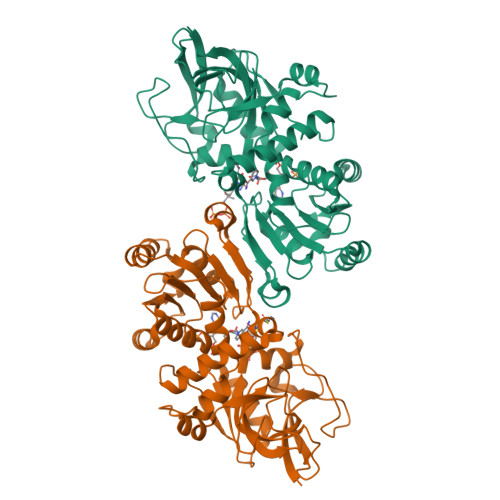The use of ene adducts to study and engineer enoyl-thioester reductases.
Rosenthal, R.G., Vogeli, B., Quade, N., Capitani, G., Kiefer, P., Vorholt, J.A., Ebert, M.O., Erb, T.J.(2015) Nat Chem Biol 11: 398-400
- PubMed: 25867044
- DOI: https://doi.org/10.1038/nchembio.1794
- Primary Citation of Related Structures:
4W99, 4WAS - PubMed Abstract:
An improved understanding of enzymes' catalytic proficiency and stereoselectivity would further enable applications in chemistry, biocatalysis and industrial biotechnology. We use a chemical probe to dissect individual catalytic steps of enoyl-thioester reductases (Etrs), validating an active site tyrosine as the cryptic proton donor and explaining how it had eluded definitive identification. This information enabled the rational redesign of Etr, yielding mutants that create products with inverted stereochemistry at wild type-like turnover frequency.
Organizational Affiliation:
Institute of Microbiology, ETH (Swiss Federal Institute of Technology) Zurich, Zurich, Switzerland.





















